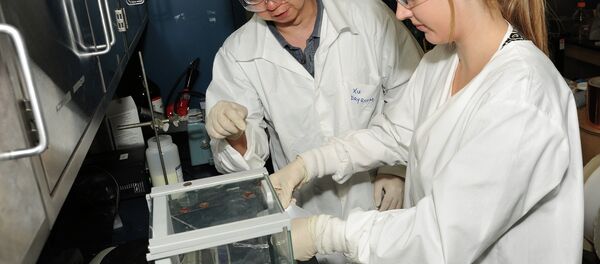Time crystals consist of interacting atoms, like regular crystals. However, the atom systems in the newly-discovered matter arrange themselves not only in space, but in time.
When asked what they actually look like and about their properties, Dr. Landig said that “assuming you bang the system at one second, you get response at another second.”
“The system has its own clock, which ticks regardless of what is going on.”
The research teams created the crystals by bombarding ytterbium ions with laser pulses consequently changing the spin of the atoms.
Before the experiment the existence of time crystals was only in theory.
When asked why science previously denied the existence of this particular phenomenon, Renate Landig said that Nobel laureate Frank Wilczek came up with the idea of time crystals back in 2012, finding out that atoms can arrange in time in a sense that they always come back to a certain configuration.
“It took theorists one year to realize that such a time crystal cannot exist in a system that needs more equilibrium because that would be like a perpetuum mobile and would violate energy conservation,” Dr. Landig noted.
“Then, only a couple of years later, they figured out there was a loophole, that there are systems that are out of equilibrium,” she added.
When asked about the different approaches used by the two research teams in their work, Dr. Landig said that because the experiment conducted at the University of Maryland used 14 ions of ytterbium, they could perfectly predict the outcome of the experiment, while the Harvard University team used a diamond filled with a million particles which made it impossible to simulate that theoretically.
“That’s why it was a surprise that our system also showed a time crystal,” Dr. Landig said.
“However, at this point it isn’t obvious what practical implicatiosn this can have. Still this is one of the first phases of matter that is stable in non-equilibrium, a regime that we have not explored much in the past,” Landig observed.
“We expect that there are many more phases of matter with properties we haven’t studied before,” she added.
In January, a team of physicists at the University of Berkeley published a blueprint for producing and detecting time crystals, which scientists at the University of Maryland and Harvard University have recently put into practice with systems of trapped ions (electrically charged atoms) and impure diamonds.
They found that time crystals cannot exist in equilibrium, but it is possible to create them in non-equilibrium states. They are the first example of a new class of matter called non-equilibrium phases, in which the structure keeps oscillating, even without energy.
Have you heard the news? Sign up to our Telegram channel and we'll keep you up to speed!




